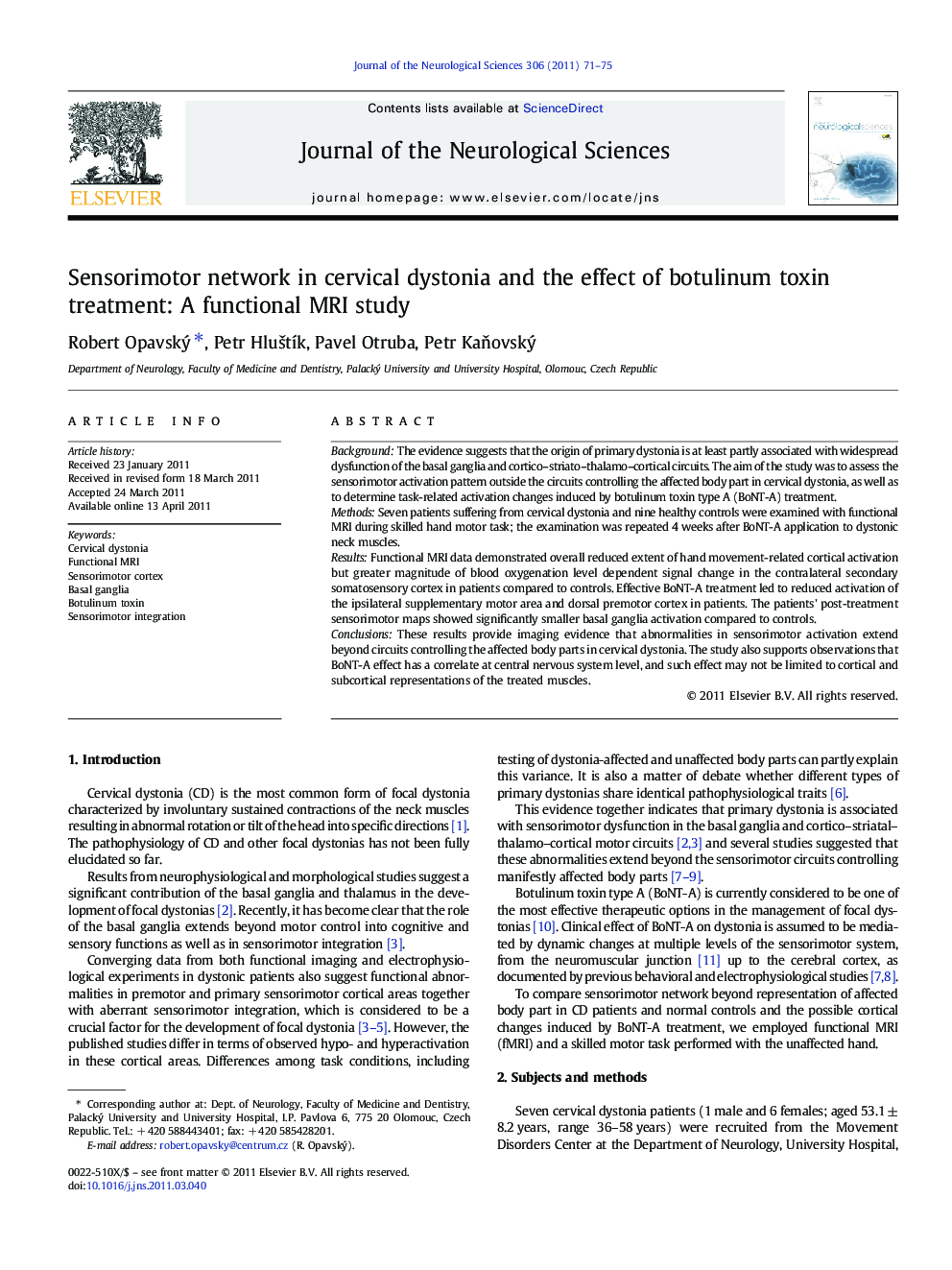| Article ID | Journal | Published Year | Pages | File Type |
|---|---|---|---|---|
| 1914193 | Journal of the Neurological Sciences | 2011 | 5 Pages |
BackgroundThe evidence suggests that the origin of primary dystonia is at least partly associated with widespread dysfunction of the basal ganglia and cortico–striato–thalamo–cortical circuits. The aim of the study was to assess the sensorimotor activation pattern outside the circuits controlling the affected body part in cervical dystonia, as well as to determine task-related activation changes induced by botulinum toxin type A (BoNT-A) treatment.MethodsSeven patients suffering from cervical dystonia and nine healthy controls were examined with functional MRI during skilled hand motor task; the examination was repeated 4 weeks after BoNT-A application to dystonic neck muscles.ResultsFunctional MRI data demonstrated overall reduced extent of hand movement-related cortical activation but greater magnitude of blood oxygenation level dependent signal change in the contralateral secondary somatosensory cortex in patients compared to controls. Effective BoNT-A treatment led to reduced activation of the ipsilateral supplementary motor area and dorsal premotor cortex in patients. The patients' post-treatment sensorimotor maps showed significantly smaller basal ganglia activation compared to controls.ConclusionsThese results provide imaging evidence that abnormalities in sensorimotor activation extend beyond circuits controlling the affected body parts in cervical dystonia. The study also supports observations that BoNT-A effect has a correlate at central nervous system level, and such effect may not be limited to cortical and subcortical representations of the treated muscles.
